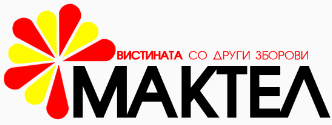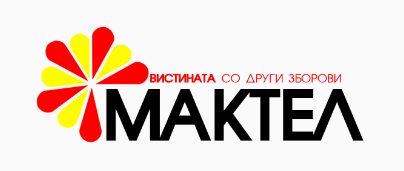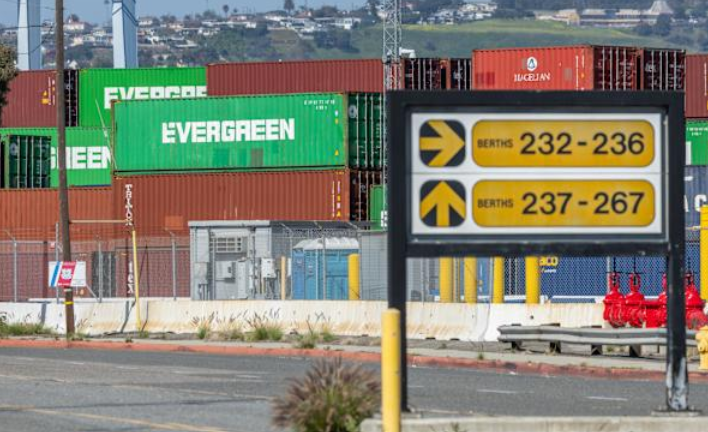The US economy contracted for the first time in three years to start 2025 as a surge in imports dragged down GDP and prices increased more than forecast. The Bureau of Economic Analysis’ advance estimate of first quarter US gross domestic product (GDP) showed economic growth contracted at an annualized rate of 0.3% during the year’s first three months, more than the 0.2% decline expected by economists surveyed by Bloomberg. The reading came in significantly lower than the 2.4% rate of growth seen in the fourth quarter of 2024. This marked the first quarter of negative GDP growth since the first quarter of 2022. “While a decline during an expansion is unusual, it’s not unheard of and the economy isn’t in a recession,” Oxford Economics chief US economist Ryan Sweet wrote in a note to clients on Wednesday.
The decline was driven by a large surge in imports, which are a subtraction in the calculation of GDP. Imports surged at an annualized rate of 41.3% in the first quarter as companies front-loaded orders ahead of anticipated tariffs from the Trump administration. The surge in imports was good for a -5% contribution to the GDP calculation in the first quarter. Final sales of goods to domestic purchasers, another sign of demand in the economy, grew at a 3% annualized rate in the first quarter, above the 2.9% seen in the fourth quarter of 2024. “Trade was a huge influence,” PNC Financial Services Group chief economist Gus Faucher told Yahoo Finance. “We saw companies bringing in a lot of imports to try to get ahead of tariffs. We saw a huge build in inventories. But when you look at underlying demand consumer spending growth, that was still pretty solid.” The “core” Personal Consumption Expenditures index, which excludes the volatile food and energy categories, grew by 3.5% in the first quarter, above estimates for 3.2% and above the 2.6% seen in the prior quarter. The report measures economic activity through the first three months of the year ending in March, meaning it covers how the US economy functioned ahead of President Trump’s tariffs but not after the president’s April 2 announcements that increased the effective tariff rate to its highest level in more than a century. Read more: The latest news and updates on Trump’s tariffs Economists and the Federal Reserve have been anticipating tariffs to push inflation higher and weigh on economic growth in the coming quarters.


“Overall this is indicating that tariffs are having an impact on the economy, that it’s been negative so far in 2025,” Faucher said. “And they’re likely to remain negative through the rest of this year. The US economy may have avoided a recession so far. Here’s how that could change. Wall Street firms have raised their odds of a year-end recession, citing growing risks from President Trump’s escalating trade policies. But with tariffs creating whiplash for businesses and consumers alike, economists caution that the economic impact could arrive sooner than anticipated, casting uncertainty over the broader outlook. As some Wall Street watchers have noted, the NBER’s Business Cycle Dating Committee, the official group tasked with declaring recessions, only makes the call after analyzing months of economic data. That means we often don’t know we’re in a recession until it’s already underway, or even over. But there are yellow flags to pay attention to. “How far to the point of no return — a recession?” Evercore ISI analyst Julian Emanuel asked in a Sunday note. “The answer lies in the jobs market.”
Widely seen as the economy’s last line of defense, employment has remained remarkably resilient — much like it did in 2022 and 2023 during the previous major wave of recession fears. But economists warn that strength may not hold through the back half of the year, particularly if prolonged tariff uncertainty continues to erode business confidence. Read more: The latest news and updates on Trump’s tariffs Already, early signs of stress are starting to emerge. On Wednesday, US economic growth contracted for the first time in three years while private employers added fewer jobs than expected. This followed a bleak consumer confidence reading for the month of April as uncertainty surrounding President Trump’s trade policy — and all of the administration’s flip-flopping — pushed inflation expectations higher and weighed on the labor outlook. Similarly, separate data from the Bureau of Labor Statistics out Tuesday showed March job openings fell to their lowest level in nearly four years, another sign that the labor market is continuing to cool.
And while weekly jobless claims remain historically low and below the 300,000 “red flag” rate, anecdotal reports of layoffs have widened, with companies like United Parcel Service (UPS), Meta (META), Chevron (CVX), Estée Lauder (EL), and others announcing job cuts in recent days and weeks. “While labor market deterioration has yet to flash red, the warning signs are there — particularly if consumer or business sentiment materially worsens,” Emanuel said.
Economists say the first real cracks likely won’t appear in headline unemployment numbers, but in other indicators, such as a rise in initial claims from small businesses or a slowdown in hiring among large corporations. US private employers add just 62,000 jobs in April amid ‘difficult’ hiring environmentмJosh Schafer Reporter In This Article: ^GSPC-0.87% ^IXIC -1.27% ^DJI -0.54% QQQ -1.11% SPY -0.92% Private employers added fewer jobs than expected in April as a sense of “unease” led to a slowdown in hiring and investors watch for signs that tariffs are weighing on economic growth. On Wednesday, data from ADP showed private payrolls grew by just 62,000 in April, far fewer than the 115,000 expected by economists and below the 147,000 new jobs added in March. This marked the smallest increase in private payrolls since July 2024. Unease is the word of the day,” ADP chief economist Nela Richardson said in the release. “Employers are trying to reconcile policy and consumer uncertainty with a run of mostly positive economic data. It can be difficult to make hiring decisions in such an environment.”
The report comes just two days before the government’s monthly jobs report is released on Friday. The April jobs report is expected to show 133,000 nonfarm payroll jobs were added to the US economy this month while unemployment held steady at 4.2%, according to data from Bloomberg. In March, the US economy added 228,000 jobs while the unemployment rate rose to 4.2%. Wednesday’s ADP release comes one day after a weaker-than-expected reading on job openings for March. Data from the Bureau of Labor Statistics showed 7.19 million jobs were open at the end of March, a decrease from the 7.48 million seen in February. Job openings in March hit their lowest level since September 2024 and were near levels not seen since December 2020. The Job Openings and Labor Turnover Survey (JOLTS) also showed 5.4 million hires were made during the month, up slightly from the 5.37 million made during February. The hiring rate held steady at 3.4%. The quits rate, a sign of confidence among workers, moved up slightly in February to 2.1% from 2%. Both the hiring and quits rates are hovering near decade lows.
Meanwhile, the ratio of job openings to unemployed workers fell to 1.02% in March, the lowest since the post-pandemic labor market recovery began. This means there is now roughly one unemployed worker for each open job in the economy. During the post-pandemic recovery in 2022, this ratio was closer to 2:1. Sarah House, senior economist at Wells Fargo, said the decline in this ratio “is reflective of a steady weakening in labor demand.” House added that the labor market is currently in a “fragile stasis that makes it vulnerable to being knocked off balance should the deteriorating outlook for growth come to fruition.” Another wide-ranging update on the state of the labor market is slated for release on Friday morning. Corporate earnings tell 2 different consumer stories
Investors should be forgiven if they are are confused over the state of the American consumer.
The narrative used to be a binary question, whether the resilience of the consumer would power through tariff uncertainty, like other moments in recent history. But this earnings season has blurred the answers, instead offering a more complicated picture. Corporate results have so far put forth two different but not altogether contradictory perspectives about the nation’s spending habits. They highlight the fluid nature of the tariff negotiations and the waiting game that has delayed understanding of what the levies will ultimately mean for people’s pocketbooks and corporate bottom lines. The first view props up a consumer largely unaffected by the trade war swirling around them. “Financial-related companies (and Telecom companies) continued to describe the consumer as solid and still spending,” wrote Lori Calvasina, RBC Capital Markets head of US equity strategy, in a report published earlier this week. Things are going fine, actually, some management teams seem to be saying. With consumers staying disciplined and not overextending, shopping habits through this lens are at healthy levels. Some companies noted this may be the case because consumers still have their jobs. Read more: What Trump’s tariffs mean for the economy and your wallet While weeks of souring consumer surveys have underscored a more pessimistic mood and fears of an economic downturn, businesses have nonetheless retained workers. (Labor Department data published Tuesday showed job openings in March hovered near a four-year low, but layoffs are also low. Friday will bring the release of the April jobs report, shedding more light on that theme.) A second view of the consumer, according to the RBC report, more closely tracks those downbeat surveys. In this wave of quarterly announcements, consumer companies have adopted a more negative tone on spending. Executives observed shoppers engaging in value-seeking behavior, like frequenting less expensive merchants or trading down to store brands. Look at Chipotle’s results.
They also note how uncertainty is influencing how people spend. Some households are choosing to hold off on buying big-ticket items or are rushing to get ahead of tariff upcharges, pulling forward their purchase of a car or smartphone. March’s retail sales had some “last hurrah” energy before the big, telegraphed tariff announcement. Job openings fall more than expected in March, hover near 4-year low
Josh Schafer Reporter In This Article: ^SPX -0.89% QQQ -1.12% ^DJI -0.54% ^IXIC -1.30% SPY -0.93% Job openings slid in March to sit near a four-year low as the labor market continued to cool. New data from the Bureau of Labor Statistics showed 7.19 million jobs open at the end of March, a decrease from the 7.48 million seen in February. Job openings in March hit their lowest level since September 2024 and were near levels not seen since December 2020. The data comes as investors closely watch for any signs that economic growth may be slowing further. The February figure was revised lower from the 7.57 million open jobs initially reported. Economists surveyed by Bloomberg had expected Tuesday’s report to show 7.5 million openings in March.
“The March JOLTS report showed some cooling of labor-market conditions, but it wasn’t weak enough to bring forward our rate-cut expectations as the Federal Reserve will be monitoring the impact of tariffs on inflation,” Oxford Economics lead US economist Nancy Vanden Houten wrote in a note to clients.
The Job Openings and Labor Turnover Survey (JOLTS) also showed that 5.4 million hires were made during the month, up slightly from the 5.37 million made during February. The hiring rate held flat at 3.4%. Also in Tuesday’s report, the quits rate, a sign of confidence among workers, moved up slightly to 2.1% from 2%. Both the hiring and quits rates are hovering near decade lows. Meanwhile, the ratio of job openings to unemployed workers fell to 1.02% in March, a new low since the post-pandemic labor market recovery began. “The hiring rate remains stuck at relatively low levels, which is usually consistent with a higher level of unemployment, but a low pace of layoffs is holding down the unemployment rate for now,” Vanden Houten added.
Tuesday’s data comes as economists and consumers have grown increasingly concerned about the outlook for the US economy amid President Trump’s tariff escalation. In a survey released on Tuesday, 32.1% of consumers told the Conference Board they expected jobs to be “hard to get'” in the next six months, up from 28.8% in March. “Notably, the share of consumers expecting fewer jobs in the next six months (32.1%) was nearly as high as in April 2009, in the middle of the Great Recession,” Stephanie Guichard, a senior economist of global indicators at the Conference Board, said in the release. “In addition, expectations about future income prospects turned clearly negative for the first time in five years, suggesting that concerns about the economy have now spread to consumers worrying about their own personal situations.” Consumer confidence plunges for fifth straight month as jobs, inflation fears rise on Trump trade policy
The Conference Board’s Consumer Confidence Index for April came in at a reading of 86, a significant drop from March’s revised 92.9 reading and short of the 88 reading expected by economists. The “Present Situation Index,” which measures consumers’ assessment of current business and labor market conditions, fell to 133.5 in April from 134.5 in March. The “Expectations Index,” which tracks consumers’ short-term outlook for income, business, and labor market conditions, also fell to 54.4 in April from 65.2 last month. This was the lowest level since October 2011. Historically, a reading below 80 in that category signals a recession in the coming year.
Meanwhile, average 12-month inflation expectations rose to 7% in April — the highest level since November 2022, when the US was grappling with abnormally high price increases. Notably, the survey was conducted through April 21, which means the time period measured includes President Trump’s shocking “Liberation Day” tariff announcement. Economists say that likely influenced responses due to the event’s national significance and potential impact on consumer perceptions. “This is telling us that [trade uncertainty] is getting to the consumer,” Yelena Shulyatyeva, senior US economist at the Conference Board, told Yahoo Finance in an interview on Tuesday. “Consumers were very much surprised by the severity of those tariffs. And they actually expect tariffs to affect their finances and their jobs.” Read more: What Trump’s tariffs mean for the economy and your wallet The Conference Board said 32.1% of consumers now expect fewer job opportunities in the next six months, a level not seen since April 2009 during the height of the Great Recession. Adding to those concerns, separate data released Tuesday by the Labor Department showed job openings in March hovered near a four-year low. “That is a scary thing,” Shulyatyeva said of the worsening job outlook. “We should probably expect much more significant increases in the unemployment rate.” As concerns mount over inflation and a weakening job market, outlooks for future income have turned negative for the first time in five years, “suggesting that concerns about the economy have now spread to consumers worrying about their own personal situations,” according to the press release. One chart shows tariffs are already slowing economic activity
Incoming shipments to the Port of Los Angeles are expected to be roughly 36% lower than the previous year in the week ending May 10. The port is a key location for imports from China. Economists believe the pullback in expected shipping container arrivals is likely an early sign of slowing trade activity between the US and China as Trump’s 145% tariff rate on China weighs on trade. It could also be an early sign of slowing economic growth to come. Bank of America senior US economist Aditya Bhave wrote in a note to clients that the expected fall in shipment arrivals at the port over the next few weeks shows the likely end of businesses and consumers “front-loading” tariffs and the start of a “broader pullback” in China trade. Read more: What Trump’s tariffs mean for the economy and your wallet
While other key indicators of an economic slowdown, like weekly filings for unemployment benefits, haven’t ticked up yet, RSM chief economist Joe Brusuelas told Yahoo Finance he’s been watching the activity at the Port of Los Angeles. Brusuelas noted that the decline in activity is one of the first signs that US economic growth is set to cool. “In June, what that means is there’ll be less goods on the shelves,” Brusuelas said. “Less goods equals higher prices. At a time when inflation goes up, that means less disposable income, less demand.” The key question in the economic narrative has been when downbeat sentiment data from consumers and businesses could show up in actual growth data. Slower shipping rates are one reason EY chief economist Gregory Daco told Yahoo Finance he expects data to reflect weaker economic activity in the coming months. Read more: 5 ways to tariff-proof your finances “We’re seeing cancellations in different ocean lines,” Daco said. “We’re seeing essentially a pullback in orders that are already being seen as of mid-April. So I would anticipate that we’ll see that in the [economic growth] data over the next couple of months.” Broadly, economists are still debating just how much US economic growth will slow this year as the higher costs of goods from tariffs are expected to weigh on consumer spending. In a research note on Monday, JPMorgan Asset Management chief global strategist David Kelly wrote that without a quick resolution to the trade war, imports, exports, and inventories all look set to fall sharply.
“We will likely see continued softness in the survey data before the hard data start to weaken around mid-to-late summer, at which point higher prices, weaker spending, and slower hiring could start to emerge in the official statistics,” Goldman Sachs US economist Emanuel Abecasis wrote in a note to clients.
In a wide-ranging analysis of 45 different economic indicators, Goldman Sachs found that economic data typically takes about four months to show “clear signs of deterioration” when a particular event drives the slowdown. In the current environment, the event is President Trump boosting the US’s effective tariff rate to its highest level in a century, which many believe will drive up inflation and slow down growth. The Goldman Sachs economics team said there is a 45% probability that the US economy will enter a recession in the next 12 months, well above the typical 15% chance seen in any given year. “It is still too early to draw strong conclusions from the limited data we have so far, and we will continue to watch for indications of slower growth in the coming months,” Abecasis wrote. Read more: What is a recession, and how does it impact you? At the current pace, the data is following the path of other event-driven recessions like the 1973 oil spike and the 1980 recession spawned from increasing interest rates. Typically, the survey data declines first, which has happened with the University of Michigan’s consumer sentiment index hovering near its lowest level since 1978. The so-called hard data, which measures actual economic activity, typically picks up following the event. This occurred in March with retail sales seeing the largest monthly increase in nearly two years. Meanwhile, durable goods orders rose 9.2% in March from the previous month, blowing away forecasts for a 2% rise as one of the biggest increases in aircraft orders on record pushed the number above consensus.
Economists argue that these data points indicate consumers and businesses are front-running Trump’s tariffs and snatching up items before price increases hit. “The thing with any pull forward of demand is that the drop thereafter can be extremely painful, because if you’ve ordered as a business, you know, half of your inventory in order to stock up, then you’re not going to be reordering the following month,” EY chief economist Gregory Daco told Yahoo Finance. “So you’ve pulled forward demand, but that leads to a significant drop off in the next time period.”













































